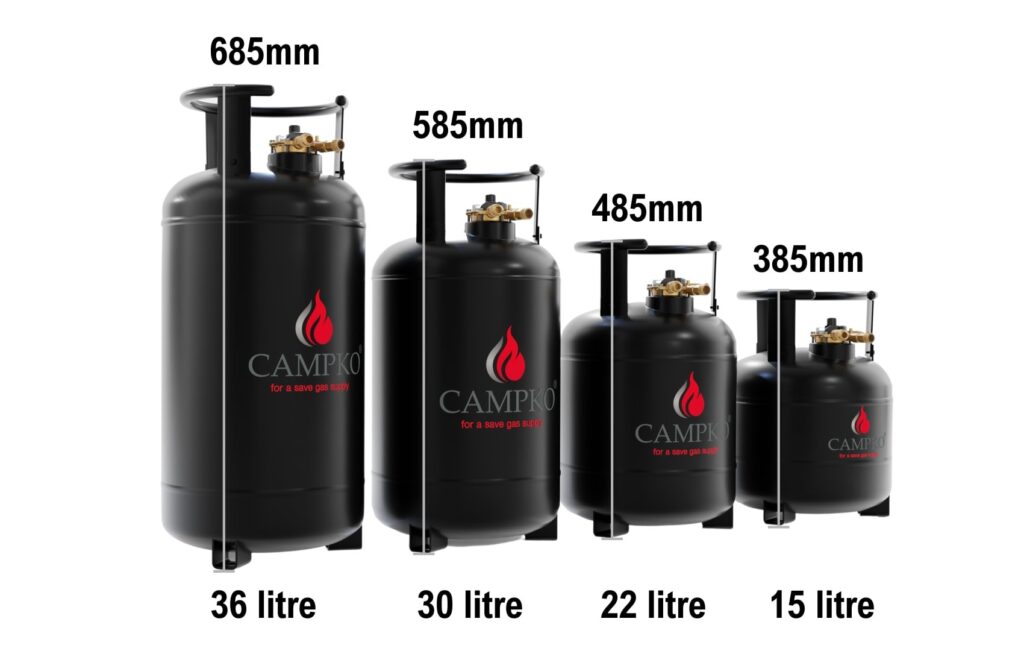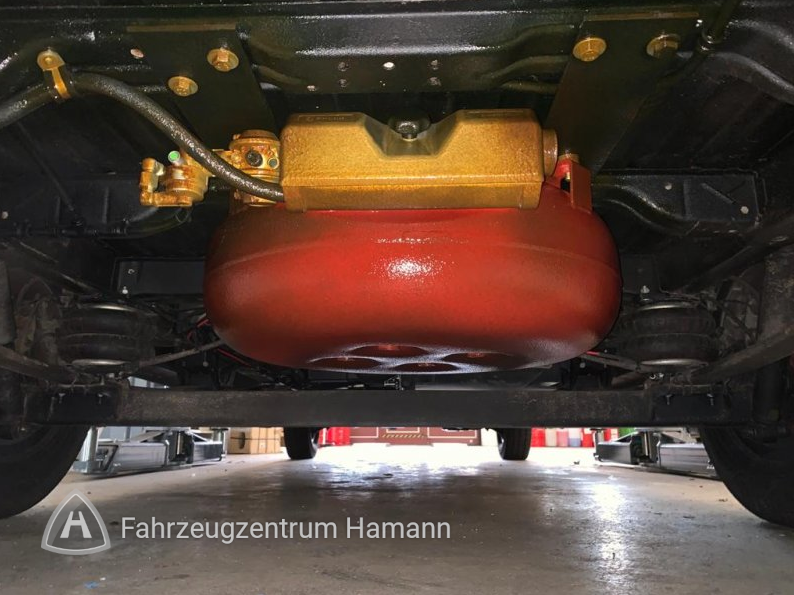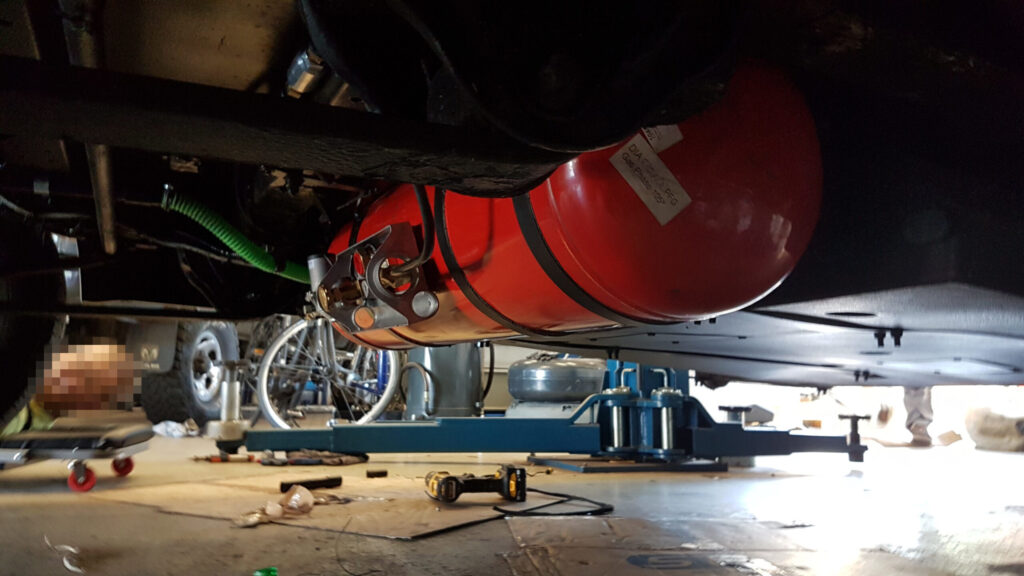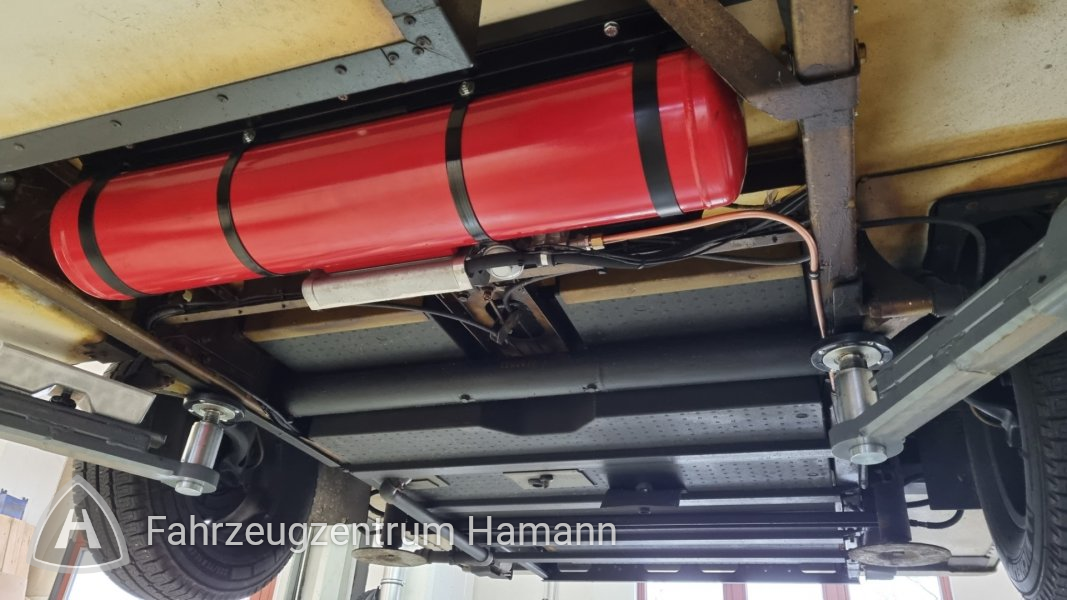Everything you need to know about permanently installed motorhome gas tanks
We are often asked what the advantages of a permanently installed gas tank are, which manufacturers there are and what the differences are between a fuel gas tank and a motorhome gas tank . In this article you will learn everything you need to know about gas tanks.
Table of contents
Differences between car gas tank and motorhome tankAdvantages of a gas tank
Which gas for a motorhome gas tank?
How do you refuel?
Which gas tank manufacturers are there for motorhomes?
What types and models of motorhome gas tanks are there?
Installation position of cylinder tanks
Difference between fuel gas tank and motorhome gas tank
Overview of common sizes with weight and volume specifications
Differences between car gas tank and motorhome tank
Not all gas tanks are the same! The car gas tank and the motorhome gas tank are often confused. The car gas tank is intended for the engine drive, but can later also be used for heating and cooking.
And even if the car gas tank and the gas tank for motorhomes look similar, they have significant differences in design. There is one key distinguishing feature, and that is the extraction pipe inside the tank! While in a car gas tank the gas is extracted at the bottom in the liquid phase, in a motorhome tank the gas is extracted at the top in the gas phase. If this is not taken into account and a car gas tank is installed, the gas will be extracted from the liquid phase and the pressure regulator will freeze after a short time. Incorrect use can have unforeseeable consequences. For example, if the liquid gas penetrates to the gas cooker and is ignited there.
Unfortunately, there are dubious fitters who work with modifications to conventional tanks. However, we strongly advise against these experiments and recommend that you always consult a specialist workshop when installing the gas system.
Advantages of a gas tank
Gas tanks offer several advantages over conventional gas cylinders. They generally have a larger capacity, which means less frequent refuelling and therefore greater convenience. In addition, gas tanks can be conveniently refilled at LPG filling stations without having to be removed.
Another advantage is that these tanks are safer as they have safety devices such as the 80% fill stop and are permanently mounted in the vehicle. They are also more cost-efficient, as refuelling is usually cheaper than buying new gas cylinders. Direct refuelling also produces less waste, which is more environmentally friendly .
Gas tanks are also more robust and durable and can be installed in a space-saving manner, thus preserving valuable storage space in the vehicle.
Many modern gas tank systems also offer the option of automatic switching between different tanks, which enables continuous use without manual intervention.
Conclusion:
Larger capacities
Convenient refilling
Safer
More cost efficient
More environmentally friendly
Robust and durable
Space-saving
80% filling stop briefly explained
The 80% fill stop for motorhome gas tanks is a safety measure that ensures that the gas tank is not filled to more than 80% of its total volume. This ensures that the gas has enough space to expand when outside temperatures rise.
Filling level indicator in the motorhome
The gas tanks offer several options for conveniently checking the fill level. This can be done either directly on the tank or via a remote display in the interior. There is also the option of checking the fill level via a smartphone app. To do this, the smartphone must be connected to the transmitter on the tank via Bluetooth.
Which gas for the gas tank in the motorhome?
In principle, any mixture of propane and butane can be filled into the gas tank of a motorhome. While butane has a higher energy efficiency, propane scores with a lower boiling temperature of -42°C. This is particularly advantageous in winter, as propane forms a gas in the upper layer of the tank even at very low temperatures and is therefore available for withdrawal. Butane, on the other hand, has a boiling temperature of around -0.5°C, which means that it is less efficient at lower temperatures and can cause difficulties when extracting gas. If you refuel at an LPG filling station, pay attention to the mixing ratio and the highest possible propane content, especially in winter, in order to get through the winter reliably.
How do you refuel?
In principle, it can be refuelled at any LPG filling station. Depending on the installation, refuelling takes place either directly at the tank or via so-called remote refuelling(LPG tank nozzle in the vehicle body).
Which gas tank manufacturers for motorhomes are there?
There are numerous manufacturers of fuel gas tanks for motorhomes. The best-known brands and suppliers on the German market include CAMPKO, Wynen Gas, Stako, GZWM and GuG.
What types and models of motorhome gas tanks are there?
Shape
In principle, a distinction is made between two types of gas tanks: ring tanks and cylinder tanks. Both can be installed on the loading area or under the floor. Underfloor refers to installation on the underside of the vehicle. The cylindrical gas tanks are also offered upright and are known as gas tank bottles.
Valve
There is also a difference in the valves. While conventional gas tanks are often referred to as 4-hole tanks, there are now also modern multi-valves and corresponding 1-hole tanks. As the term „multi“ suggests, a multifunctional valve combines all the functions of the four separate valves of a 4-hole tank.
Installation position cylinder tanks
A cylinder tank with underfloor installation is referred to as a 105° installation position. In this case, the tank is aligned so that the valve plate is positioned slightly below the centre of the side of the tank and points slightly downwards. This orientation facilitates both installation and subsequent maintenance on the vehicle platform. In contrast, 90° or 0° tanks are usually used for installation on the loading area.
A tank is already designed ex works for a specific installation position and must not be rotated at will during installation. The valves in the tank are also designed for the intended installation position.
Difference between fuel gas tank and motorhome gas tank
In both cases, it is the same type of tank. While a fuel gas tank can also be installed in a snack van, a tank in a motorhome is usually referred to as a motorhome tank.
Overview of common sizes with weight and volume specifications
CAMPKO gas tank cylinders
| Diameter | Height | Gross volume |
| 300mm | 385mm | 15 litres |
| 300mm | 485mm | 22 litres |
| 300mm | 585mm | 30 litres |
| 300mm | 685mm | 36 litres |

Ring tanks
| Diameter | Height | Gross volume |
| 630mm | 225mm | 58 litres |
| 600mm | 230mm | 53.5-55 litres* |
* Depending on manufacturer

Cylinder tanks
| Diameter | Height | Gross volume |
| 200mm | 585mm | 16 litres |
| 200mm | 717mm | 20 litres |
| 200mm | 884mm | 25 litres |
| 200mm | 1050mm | 30 litres |
| 230mm | 630mm | 23 litres |
| 230mm | 809mm | 30 litres |
| 230mm | 1004mm | 38 litres |
| 270mm | 607mm | 30 litres |
| 270mm | 792mm | 40 litres |
| 270mm | 1069mm | 55 litres |
| 300mm | 646mm | 40 litres |
| 300mm | 940mm | 60 litres |
| 300mm | 1088mm | 70 litres |
| 300mm | 869mm | 60 litres |
| 300mm | 1004mm | 70 litres |
| 300mm | 632mm | 55 litres |
| 300mm | 944mm | 85 litres |
| 300mm | 1099mm | 100 litres |
| 300mm | 1298mm | 120 litres |
| 300mm | 1090mm | 120 litres |





